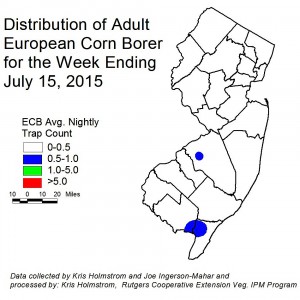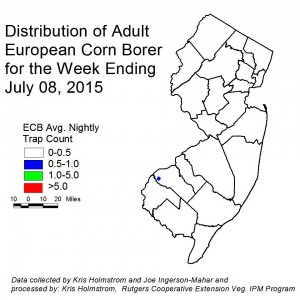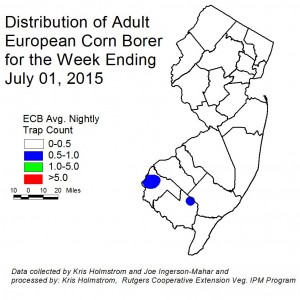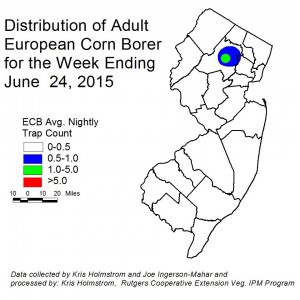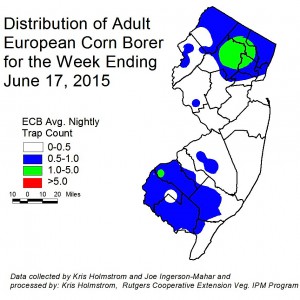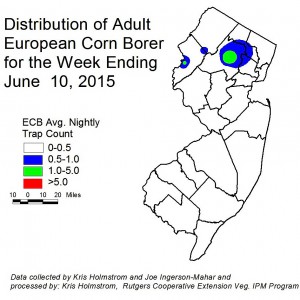Sweet Corn
There is still very little European corn borer (ECB) adult activity at this time. Few individuals have been captured throughout NJ this past week (see ECB map). ECB infestations are absent from sweet corn plantings. We would expect to see signs of the second flight within the next week or so.
As always, consider treating when the number of infested plants in a 50 plant sample exceeds 12%. Any planting remaining at or above threshold as it proceeds to full tassel should be treated, as this is the last stage at which ECB larvae will be exposed and vulnerable to insecticidal sprays.
See the 2015 Commercial Vegetable Recommendations Guide for insecticide choices.
[Read more…]
